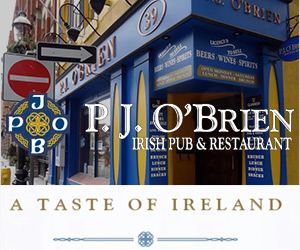Ballymena and its environs has been the birth place of some of our most notable emigrants; from George and Will Millar of the Irish Rovers to movie star Liam Neeson. However, it was a young mercantile apprentice who left in 1853 for a new life in Canada that would first bring fame to the small Ulster town.
Timothy Eaton arrived in Upper Canada at the age of 19 and would hold a series of minor jobs before attempting to strike out on his own, establishing his own business in partnership with his brother James. Their first attempt was modest; a small general goods store in the hamlet of Kirkton, Ontario. They enjoyed moderate success and soon were also running the local post office. The small business thrived for the first four years but as competition increased and the Canadian economy entered a depression Timothy decided to move to the larger settlement of St Mary’s and open a bakery, though he quickly transformed it into a general store.
It was here that he embraced the first of several business practices that would help him build his retail empire – he aimed to sell all his goods for cash. By doing so he was able to offer lower prices to his patrons and increase his volume of sales while also limiting ‘in kind’ transactions. This left him with plenty of ready money to pay his wholesalers and Eaton’s soon became a highly valued customer. By 1867, as Canada became an independent dominion within the British Empire, Timothy Eaton once again sought access to a larger market and, after dissolving his partnership with his brother, moved to Toronto where he briefly ran his own wholesale business before switching to the dry goods trade.

His first store was located at 178 Yonge Street, well away from the general pedestrian thoroughfares of the city. Nonetheless, Eaton carved out quite a profitable niche for himself by catering specifically to the working class community of the city. Now determined to only sell goods at fixed prices for cash, his store grew rapidly as a rise in living standards in the newly industrialised urban environ generated demand for those luxury items once only within reach of the upper and middle classes. This ready capital allowed him to bypass the local wholesalers and purchase goods directly from Europe, further reducing his overheads.
In 1883, unable to physically expand his existing premises he moved down the road to what would become the nerve centre of his retail empire and later the flagship of a vast network of department stores, 190-196 Yonge Street. Here he erected a bright and airy three storey building fitted with electric lighting and even a modern sprinkler system. Eaton also avoided the pit falls of his competitors by ensuring the décor of the new store remained modest and understated so his largely working class patrons would continue to feel comfortable shopping there.

Over the next thirty years his premises and workforce would grow rapidly and by the time of his death the store would encompass 9 hectares (22 acres) of prime real estate in central Toronto while the number of staff employed by the T Eaton Company soared to more than 7,000. In order to maintain his strong business growth he needed to constantly find new markets and this demand led to the creation of the iconic Eaton’s catalogue, a new mail order service that allowed customers in remote areas to purchase a whole range of goods at the same cost, and under the same terms, as those in Toronto. Dry goods, sporting equipment, furniture, medication, even flat pack homes could be ordered, which allowed settlers along the Canadian frontier to avoid paying the inflated mark-up charged by local merchants.
Eaton’s came to exert an enormous influence on the retail sector in North America. US department stores would take their lead from innovations pioneered in Toronto while the Eaton promise of “Satisfaction Guaranteed, or Money Refunded” remains a retail mantra to this day.
When Timothy Eaton died in 1907 he was one of the nation’s wealthiest individuals (his personal estate alone was worth $5.25 million) and his was perhaps the most recognisable name in the country. Under his successors Eaton’s reached even greater highs; during the Second World War the company employed over 70,000 people in almost every city and town in Canada. Two giant bronze statues of Eaton were unveiled in 1919 in the Toronto and Winnipeg stores respectively while a small village in Saskatchewan, Eatonia, was also named in his honour. Not a bad legacy for a young emigrant from Ballymena.

This Extraordinary Emigrants article was written by Nathan Mannion, senior curator of EPIC The Irish Emigration Museum in Dublin’s Docklands, an interactive museum that tells the story of how the Irish shaped and influenced the world. This article first appeared in The Irish Times













































